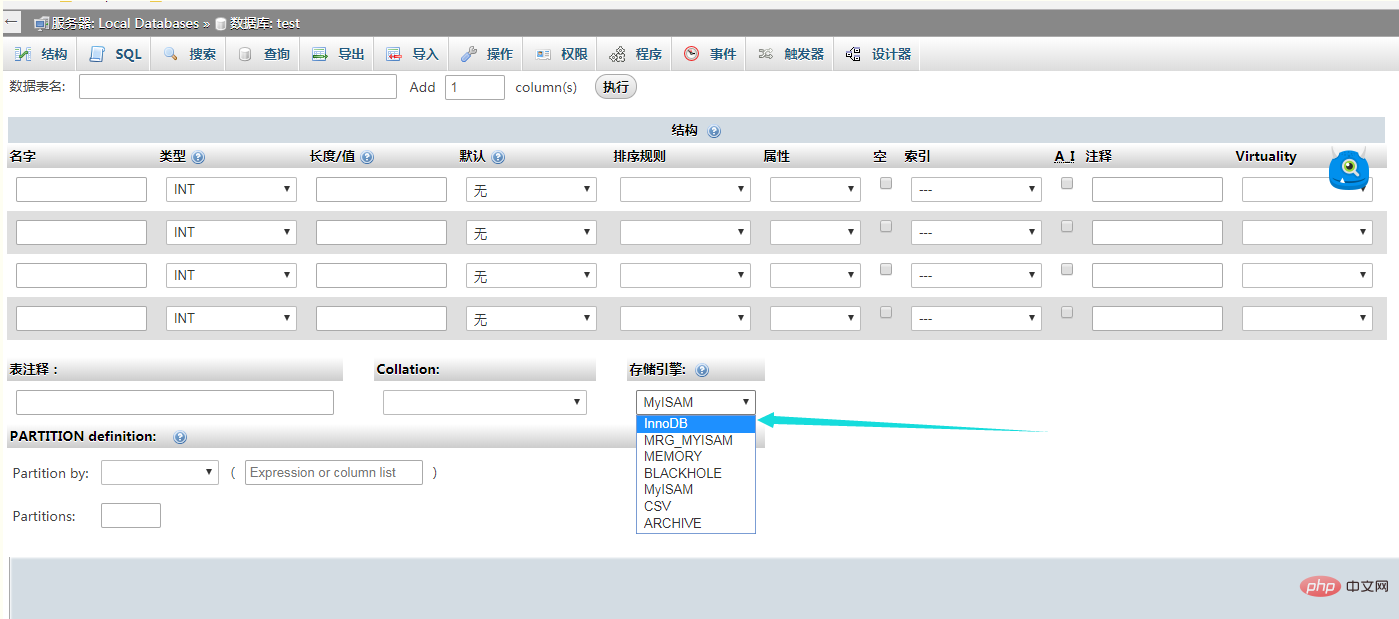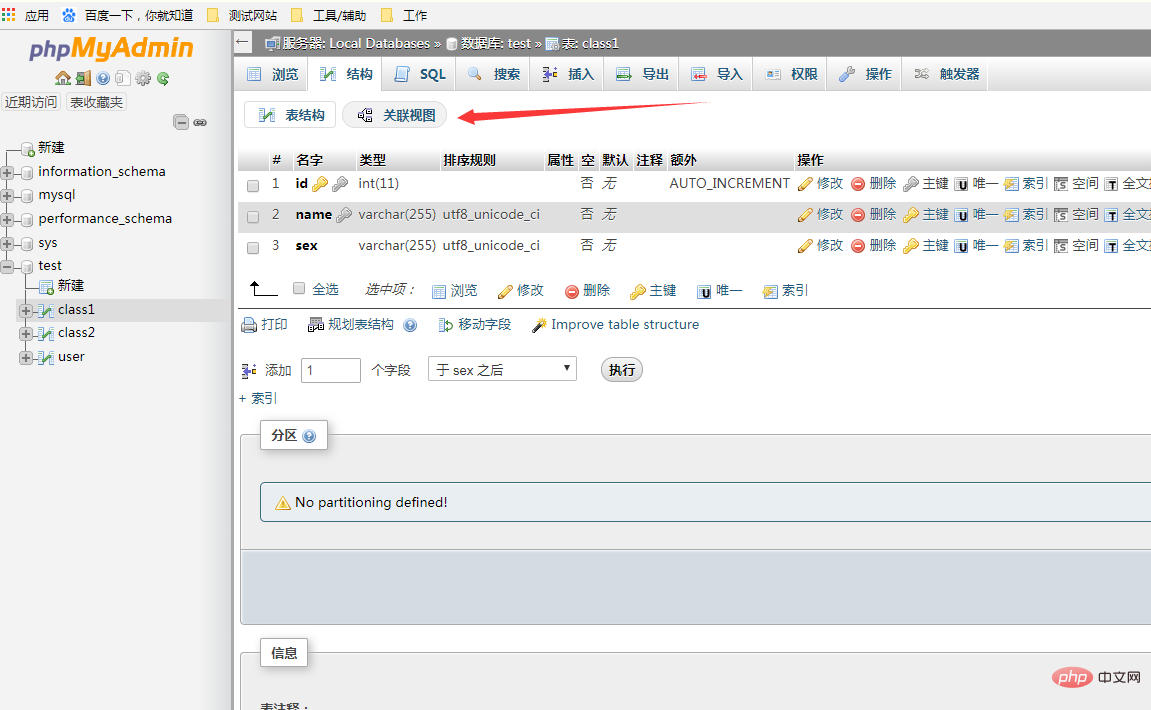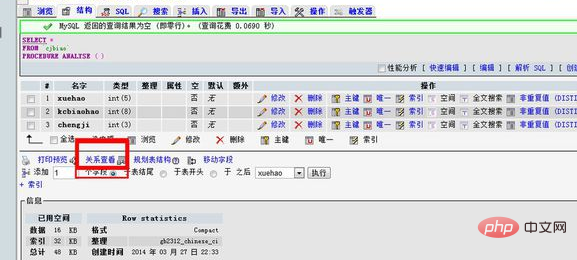

phpmyadminHow to create constraints? How to use phpmyadmin to establish foreign key constraints
In the past, sql statements were used to associate primary and foreign keys. Now it is much more convenient to use visual phpmyadmin, but when doing primary and foreign key constraints, it is I can't find where the operation is. Searches on the Internet are also full of strange things, all of which are very obscure. Many of them say that you need to use the insert sql statement. In fact, you don’t need to. See the steps:
I created two tables:
Table 1: class1 (main table)






The above is the detailed content of How to create constraints in phpmyadmin. For more information, please follow other related articles on the PHP Chinese website!
 Commonly used mysql management tools
Commonly used mysql management tools
 What to do if phpmyadmin fails to import sql file
What to do if phpmyadmin fails to import sql file
 How to change phpmyadmin to Chinese
How to change phpmyadmin to Chinese
 What's going on when phpmyadmin can't access it?
What's going on when phpmyadmin can't access it?
 The advantages of OTC trading
The advantages of OTC trading
 Reasons why css loading failed
Reasons why css loading failed
 What are the methods to change IP in dynamic vps instantly?
What are the methods to change IP in dynamic vps instantly?
 How to refund Douyin recharged Doucoin
How to refund Douyin recharged Doucoin
 Digital camera driver
Digital camera driver




